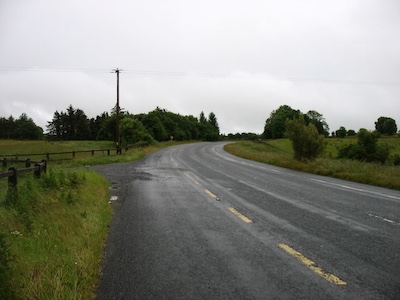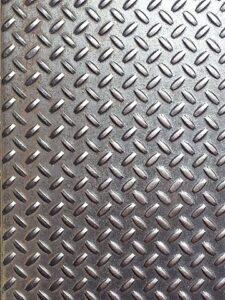 The Defamation (Amendment) Bill 2024 begins as follows:
The Defamation (Amendment) Bill 2024 begins as follows:
Bill entitled An Act to provide that defamation actions in the High Court shall not be tried with a jury; to give effect to Directive (EU) 2024/1069 of the European Parliament and of the Council of 11 April 2024 on protecting persons who engage in public participation from manifestly unfounded claims or abusive court proceedings (‘Strategic lawsuits against public participation’) in so far as it relates to defamation proceedings; for those and other purposes to amend the Defamation Act 2009; and to provide for related matters
Be it enacted by the Oireachtas as follows:
PART 1 PRELIMINARY AND GENERAL Short title and commencement
1. (1) This Act may be cited as the Defamation (Amendment) Act 2024.
(2) This Act shall come into operation on such day or days as may be appointed by order or orders made by the Minister for Justice, either generally or by reference to any particular purpose or provision, and different days may be so appointed for different purposes or different provisions, including the insertion of section 34C into the Principal Act.
Definition
2. In this Act, “Principal Act” means the Defamation Act 2009.
As the Explanatory Memorandum explains, section 1 is a standard short title and commencement provision, and section 2 defines the “Principal Act” as the Defamation Act 2009 (also here) (the 2009 Act). However, the reference at the end of section 2 of the Bill, to section 34C of the 2009 Act as inserted by section 17 of the Bill, is – to say the least – unusual. Section 34C relates to the information to be given to court in the context of applications to dismiss strategic lawsuits against public participation. It is odd to single out a specific section like this, especially when the general power would have covered it anyway, so I will return to this point when I discuss section 17. Other than that, this is all straightforward boilerplate, and there is little more to be said.
Background and comparative reading for analysis of the Bill
The road to this Bill has been long, and winding (but, given the road in the photo above, cue the Sawdoctors, rather than, well, you know). The law before the 2009 Act was a combination of common law and the Defamation Act, 1961 (also here). After significant effort on the part of the media in the late 1980s, culminating in the path-breaking Kevin Boyle & Marie McGonagle Report on Press Freedom and Libel (National Newspapers of Ireland, 1988), the Government was persuaded that the law of defamation was in need of reform, and, in January 1989, the Attorney General referred the issue to the Law Reform Commission. In short order, the Commission produced a Consultation Paper on The Civil Law of Defamation (LRC CP 3-1991, March 1991) and a Report on The Civil Law of Defamation (LRC 38-1991, December 1991), a Consultation Paper on The Crime of Libel (LRC CP 5-1991, August 1991) and a Report on The Crime of Libel (LRC 41-1991, December 1991) (the LRC Reports). As happens all too often, after widespread welcome, the rest was silence. Thereafter, in October 2002, the then Minister for Justice, Equality and Law Reform, Michael McDowell, established a Legal Advisory Group on Defamation (of which I was a member). It met with a grudging welcome from the media. We reported in March 2003 (pdf), recommending, inter alia, the implementation of the LRC Reports (the LAG Report). This led to the publication of the Defamation Bill 2006 (as initiated) (pdf); it was introduced in the Seanad on 7 July 2006, the second reading began on 6 December 2006, and I tracked it passage through the Houses of the Oireachtas here on this blog. This eventually became the the Defamation Act 2009 (also here) (the 2009 Act) (on which I have commented many times on this blog). The 2009 Act updated Irish defamation law and put it largely on a statutory footing.
Several issues arose with the operation of the 2009 Act. For example, the Law Reform Commission was asked by the Attorney General to consider the issue of “fair and accurate” reporting of proceedings (Issues Paper on Privilege for reports of court proceedings under the Defamation Act 2009 (LRC IP 16-2018)). More generally, the process that led to this Bill began in March 2022, when the Department of Justice published a Report of the Review of the Defamation Act 2009 (the Report); in March 2023, the Department published a Draft General Scheme of the Defamation (Amendment) Bill (the Heads); in September 2023, the Joint Oireachtas Committee on Justice published their Report on Pre-Legislative Scrutiny of the General Scheme of the Defamation (Amendment) Bill (pdf) (the PLS Report); and now we have, the Defamation (Amendment) Bill 2024 and accompanying Explanatory Memorandum (pdf). Sections 1 & 2 of the Bill are set out above. In subsequent posts, I will deal with other sections of the Bill.
Irish defamation law is not alone in seeking reform. Other common law countries have been grappling with similar issues as well. So, for example, the UK’s Defamation Acts of 1952 (the inspiration for Ireland’s 1961 Act) and Defamation Act 1996 have been updated in each of the devolved jurisdictions: so, in England and Wales, there is the Defamation Act 2013); in Scotland, there is the largely similar Defamation and Malicious Publication (Scotland) Act 2021; and, in Northern Ireland, there is the Defamation Act (Northern Ireland) 2022. Some of the reforms in these Acts were anticipated by our 2009 Act; other reforms in these Acts suggested how our 2009 Act might in turn be further reformed.
In England and Wales, after a consultation (pdf, via Wayback Machine) commenced in 2011, and significant parliamentary debate, the Defamation Act 2013 removed the presumption in favour of trial by jury in defamation cases, replaced three common law defences (justification, fair comment, and Reynolds) with equivalent statutory defences (truth, honest opinion, and responsible publication in the public interest), requires plaintiffs to show that they have suffered “serious harm” and that England and Wales is “clearly the most appropriate jurisdiction” in which to bring the claim, and imposed additional obligations on operators of websites. More recently, sections 194 and 195 of the Economic Crime and Corporate Transparency Act 2023 provide at least a partial solution to the problems associated with SLAPPs.
In Scotland, the Scottish Law Commission issued a Discussion Paper (No 161, 2016) (pdf) and a Report (No 248) (pdf). The government conducted a consultation, and then introduced the Bill that became the 2021 Act. It removed the presumption in favour of trial by jury in defamation cases, replaced three common law defences (justification, fair comment, and Reynolds) with equivalent statutory defences (truth, honest opinion, and responsible publication in the public interest), requires plaintiffs to show that they have suffered “serious harm” and that Scotland is “clearly the most appropriate jurisdiction” in which to bring the claim, reformed the procedure of the offer to make amends, and reformed the operation of the defence of innocent publication (which partially addressed the position of operators of websites).
In Northern Ireland, a careful report by Andrew Scott Reform of Defamation Law (2016), for a government consultation, led to a Bill in June 2021, and then to the 2022 Act. Unlike our proposals, this removed the presumption in favour of trial by jury in defamation cases, but permitted the parties to apply to the judge to order otherwise (which Keegan LCJ (Treacy LJ and Colton J concurring) did in Swann v Morrison [2023] NICA 19 (28 March 2023)). It also replaced three common law defences (justification, fair comment, and Reynolds) with equivalent statutory defences (truth, honest opinion, and publication in the public interest). But the 2022 did not implement the other reforms in the 2013 Act, so there is no “serious harm” test, no requirement that NI is “clearly the most appropriate jurisdiction”, no additional obligations on operators of websites, and no provisions relating to SLAPPs (On the NI reforms, see Mark Hanna “The ‘chilling effect’ of defamation law in Northern Ireland? A comparison with England and Wales in relation to the presumption of jury trial, the threshold of seriousness and the public interest defence” (2021) 72(AD3) Northern Ireland Legal Quarterly 1). The NI government conducted a review of the operation of the Act (see here, here, here), covering issues considered in other reform processes that had not made it into the 2022 Act, such as online defamation, libel tourism, SLAPPs, costs as a barrier to access to justice, and alternative dispute resolution. The Report (July 2024) (noted here) concluded that it is too soon to bring forward further legislative reform in this area (except perhaps in relation to SLAPPs).
Finally, here, I should note that, if our ongoing defamation reform process can trace its lineage back to the late 1980s and early 1990s, so can Australia’s. I seem to remember that it began with Discussion Papers on Reform of Defamation Law by the AGs of New South Wales, Queensland and Victoria in 1990 and 1991 (if there is anything earlier, please let me know). After significant engagement from Law Reform bodies and civil society, this led to model defamation provisions in 2005 (pdf), and these were subsequently enacted by the various Australian jurisdictions. Then, in 2018, the Council of Attorneys-General undertook a review of defamation law. The first phase of the consequent reforms included the serious harm test and the new public interest defence (see the consolidated Model Defamation Provisions (2023 (pdf)). The second phase of this review is considering, in particular, with many issues around online defamation.
 This is my third post in a planned series on this blog over the next few weeks, where I hope to go through the Bill section by section, and then add a few posts on things that are missing. I have assembled here a large number pieces of recent defamation reform legislation and as much official supporting material as I could find. If you’ve made it this far, and if you’re aware of any official material that I’ve missed, I’d be very grateful to be pointed in the right direction. I will frequently refer back to the material in this post in my subsequent posts on the Bill.
This is my third post in a planned series on this blog over the next few weeks, where I hope to go through the Bill section by section, and then add a few posts on things that are missing. I have assembled here a large number pieces of recent defamation reform legislation and as much official supporting material as I could find. If you’ve made it this far, and if you’re aware of any official material that I’ve missed, I’d be very grateful to be pointed in the right direction. I will frequently refer back to the material in this post in my subsequent posts on the Bill.
Meanwhile, apart from the reference to section 34C of the 2009 Act as inserted by section 17 of the Bill, sections 1 and 2 are boilerplate provisions. Subsequent provisions in the Bill will not be quite so straightforward to parse and assess.
One Reply to “Sections 1 & 2 of the Defamation (Amendment) Bill 2024 – and background and comparative reading for analysis of the Bill”